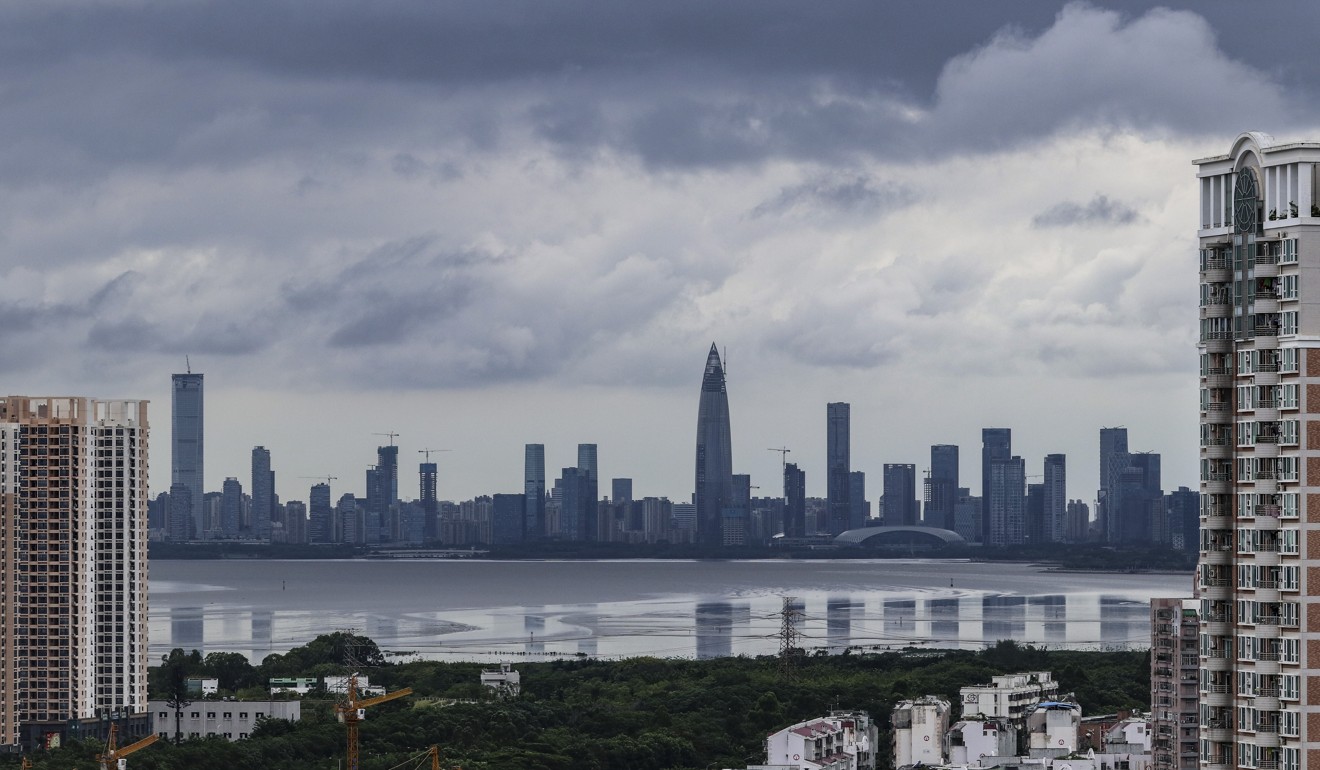
Greater Bay Area economy to reach US$3.6 trillion by 2030, Colliers research says
Expect a mega-economy to emerge amid growing linkages in the Greater Bay Area, with a mind-boggling US$3.6 trillion in annual economic output from the region in a little more than a decade, according to new research.
The growth entails a near tripling of the region’s current size, even as China’s economy is set to cool, according Daniel Shih, director of research at Colliers, who notes that the Bay area had an annual economic output worth US$1.3 trillion in 2015.
“I think this could be achieved although the economic growth rate has been slowing down in China in recent years,” Shih said.
The research came after Chinese Premier Li Keqiang announced a plan for the “development of a city cluster in the Guangdong-Hong Kong-Macau Greater Bay Area” in March.
The plan is part of China’s urbanisation push, to have clusters leveraging the strength of first-tier cities to boost growth in less developed ones.

The US$3.6 trillion figure was based on a comparison of different cities by benchmarking GDP per capita and the current GDP per capita for Bay area cities and regions in Colliers’ report “Greater Bay Area in New Development Context”.
Even if the annual growth rate eases to 5 per cent per year,the US$3.6 trillion target could be achieved by 2037, Shih said.
The Bay area is already an important economic region, ranking as the fifth largest economy in Asia and home for 19 Fortune 500 companies as well as with the highest port throughput in the world.
The size of the Bay area’s emerging economy is comparable to Tokyo, San Francisco, and New York, according to the report.
Meanwhile, the area’s per capita GDP in 2015 at 107,011 yuan (US$16,074) was 2.2 times higher than China’s national average at 49,992 yuan, according to advisory firm CW CPA.
In 2015, the Pearl River Delta region, excluding Hong Kong and Macau, generated 9.1 per cent of China’s GDP.
Moreover, Guangdong accounted for 7.5 per cent of China’s total retail sales, yet it has only 4.3 per cent of the country’s population. The province accounts for about 11 per cent of China’s annual economic output.

Fast economic growth and wealth creation will generate demand for real estate. The need for office space will continue to rise in the Bay area, driven by demand from finance, business services and IT industries, according to the Colliers’ report.
Office rents in Futian District will close the gap with those in Tsim Sha Tsui as it will only take 15 minutes to travel between the two districts when a new express rail link opens next year.
“Futian District rents will rise 50 per cent in the next five years,” according to the report.
Guangzhou’s rents will increase gradually with a more manageable supply pipeline.
Office leasing costs at Pearl River New City, in Guangzhou, will see 20 per cent growth in five years, according to the report.
In Hong Kong rents at Island East will increase by 20 per cent in the next five years due to decentralisation from Central and an increasing supply of new office stock.
But the report also warned that investors will need to pay attention to the decreasing yield spread due to rising capital costs in China.
Grade A office prices have been growing faster than rental rates, resulting in shrinking yields.
In the retail sector, growing disposable income and the spread of e-commerce have contributed to the changing retail landscape in the Bay area.
“The e-commerce development is much greater in Shenzhen and Guangzhou than other tier 2 and 3 cities,” the report said.
Shopping malls in Shenzhen, Guangzhou and Hong Kong will have to reposition and optimise tenant mix or adopt new strategies in the face of challenges from e-retailing, the report suggests.
Demand for additional retail space will be concentrated near residential communities in tier 2 cities due to population influx from Shenzhen and Guangzhou, Colliers said.

“Zhuhai and Zhongshan will benefit from improving accessibility and Dongguang and Huizhou will attract new investments from Shenzhen,” the report said.
Guangzhou housing prices will continue to rise steadily while Hong Kong will be more sensitive to changes in interest rates, the report forecast.
Shenzhen, however, should experience a moderate downward adjustment following the home-price spike in recent years, according to the report.
With the successful implementation of the Belt and Road Initiative and the further integration of Bay area, Hong Kong has the potential to become a top global city on par with New York and London, the report said.
The integration of GBA will further encourage cross-border e-commerce in Hong Kong and stimulate future demand for quality warehouse space.
The report warned that unless Hong Kong can increase its housing supply pipeline, property prices will keep rising as newly-weatlthy residents around the Bay areas seek homes in the city.

